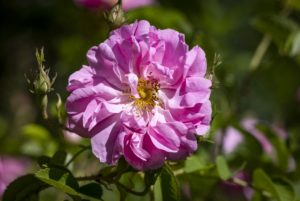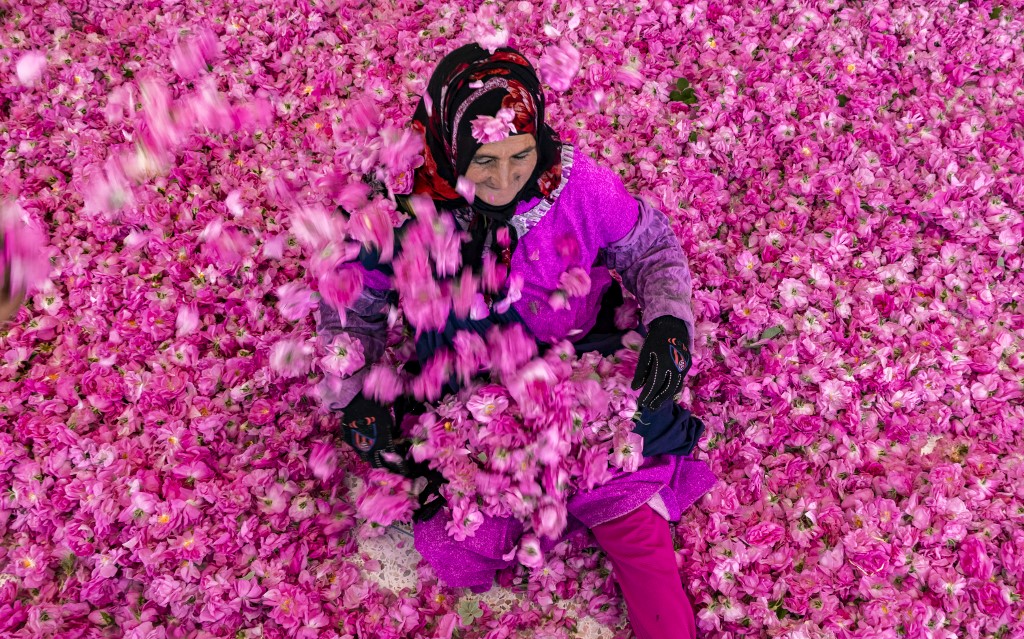São Paulo – It is harvest time in the Valley of the Roses, in the southern part of Morocco, where the Damask rose grows. The valley is close to the town of Kelaat M’Gouna, in the Atlas Mountains. This rose variety is what drives the region’s economy. It is one of the main ingredients in cosmetics, is used in necklaces offered by children to visitors on the streets, gives name to hotels and color to taxis. Moreover, there is a rose statue in Kelaat M’Gouna’s center and an annual flower festival that used to draw thousands of visitors before the COVID-19 pandemic.

The inebriating perfume of the Damask rose, a variety introduced at the time of the caravan trade, scents hedges and fields irrigated by two valleys between the Atlas Mountains and the Sahara Desert.
The harvest takes place during a short season from April to May. The work starts at dawn, taking about six hours, ending just before the sunshine damages the bright-pink-colored petals. The flowers are eventually distilled into a precious oil that costs $ 18,000 per kilo. A kilo of essential oils requires between four and five tons of flowers.
Small local distilleries produce rose water and essential oils sold in cooperatives, along with other related cosmetics, such as soaps, creams, perfumes, and ointments.

According to the news site Mena FN, Rochdi Bouker, head of the Moroccan growers and processors association (Fimarose), sees the rose as “an engine of local development,” banking on the global trend for natural raw materials and organic products.
To increase income and fight the exodus from rural areas, Morocco must develop the derivatives that generate the most income; essential oils and “concrete,” an extract obtained by a solvent which, once filtered, is highly treasured by the luxury perfume industry, added Bouker.
Moroccan rose exports are currently restricted mainly to rose water and dried flowers. Essential oils account for only about 50 kilos of annual exports and “concrete” for 500 kilos, a fraction of the industrial volumes sold by Bulgaria and Turkey, the main competitors in the industry, according to Fimarose.
In the region of the Valley of the Roses, the main buyers are passing tourists. But with the pandemic, the price of fresh flowers has dropped by about 30% in the past two years. The downturn came after a period of expansion, driven by efforts by the Ministry of Agriculture to develop the sector.
Translated by Elúsio Brasileiro




